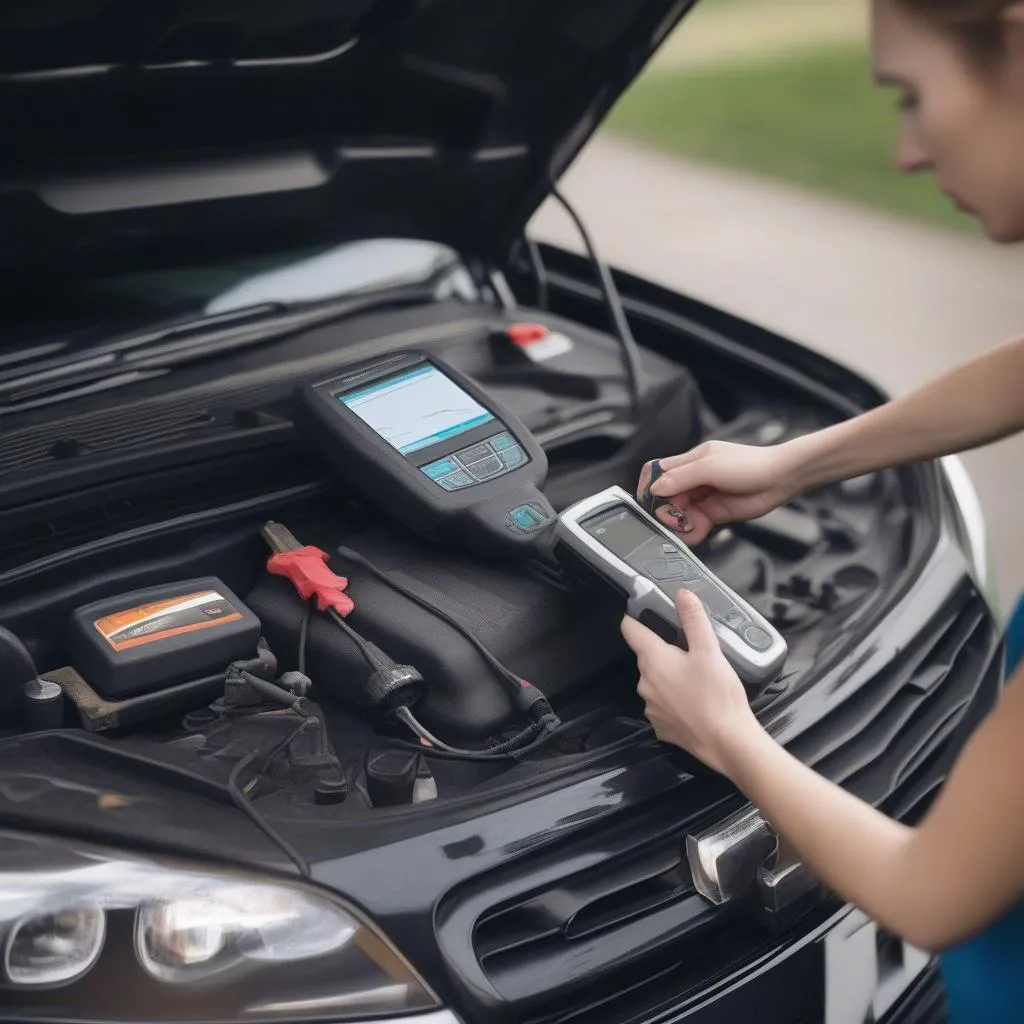Have you ever found yourself staring at a blinking dashboard light, wondering what it means? Or perhaps you’re a DIY car enthusiast who wants to troubleshoot problems yourself. In both cases, the answer might lie in the realm of OBD 1 and 2 scanners.
These devices have become indispensable tools for both professional mechanics and car owners, allowing you to decipher your vehicle’s language and address issues quickly.
What are OBD 1 and 2 Scanners?
OBD stands for On-Board Diagnostics, a standardized system that allows you to access and interpret data from your vehicle’s computer. OBD 1 and 2 are two generations of this technology, with each offering different capabilities and features.
OBD 1: The First Generation
OBD 1 scanners, introduced in the late 1980s, were primarily used by mechanics to diagnose engine problems. They provided basic information about engine sensor readings, helping to identify the source of issues like misfires or fuel system malfunctions.
However, OBD 1 scanners were not as widely adopted as their successor. This is due to a lack of standardization, meaning different manufacturers had their own unique communication protocols. This made it difficult for mechanics to use a single scanner for all vehicles.
OBD 2: The Global Standard
OBD 2, introduced in 1996, revolutionized car diagnostics. It established a universal communication protocol for vehicles sold in the United States and many other countries.
OBD 2 scanners have become the go-to tools for anyone working on modern cars. They provide access to a wealth of information, including:
- Engine performance data
- Emission system status
- Transmission information
- ABS and airbag system codes
- Fuel economy readings
OBD 2 scanners are also incredibly user-friendly. Many models come with intuitive software and clear displays, making them accessible for even the most novice car owners.
Why Use an OBD 1 and 2 Scanner?
Using OBD 1 and 2 scanners offers several advantages:
- Early Detection of Problems: Scanners can identify potential issues before they become major problems, saving you money on repairs.
- DIY Troubleshooting: If you’re comfortable with basic car maintenance, OBD 1 and 2 scanners allow you to diagnose and fix problems yourself, potentially saving you money on labor costs.
- Increased Vehicle Safety: By accessing data from safety systems like airbags and ABS, OBD 1 and 2 scanners can help ensure your vehicle is operating safely.
- Performance Monitoring: You can use scanners to track your vehicle’s performance and identify areas for improvement, such as fuel efficiency or engine performance.
Common Questions about OBD 1 and 2 Scanners
Q: How do I choose the right OBD scanner?
A: When selecting a OBD 1 and 2 scanner, consider the following factors:
- Vehicle Compatibility: Ensure the scanner is compatible with your vehicle’s year, make, and model. Many scanners are compatible with all OBD 2 vehicles, but some models may only work with specific brands or models.
- Features: Determine what features are essential for your needs. Some basic scanners simply read and clear codes, while advanced models can display real-time data, perform live data monitoring, and even offer diagnostic guidance.
- Ease of Use: Choose a scanner with an intuitive interface that’s easy to understand and navigate.
- Price: Scanners range in price from affordable basic models to more expensive advanced options. Set a budget and research models that fit your needs and price point.
Q: How do I use an OBD 1 and 2 scanner?
A: Using an OBD 1 and 2 scanner is usually straightforward. Most scanners come with clear instructions. Here’s a general overview:
- Connect the scanner to your vehicle’s diagnostic port. This port is typically located under the driver’s side dashboard or under the hood.
- Turn on the ignition (but don’t start the engine).
- Follow the on-screen instructions to run a diagnostic scan.
- Interpret the results and address any error codes.
- Disconnect the scanner.
Q: Where can I buy an OBD 1 and 2 scanner?
A: You can purchase OBD 1 and 2 scanners from various retailers, including:
- Online retailers: Amazon, eBay, and other online marketplaces offer a wide selection of scanners.
- Auto parts stores: Stores like AutoZone, Advance Auto Parts, and O’Reilly Auto Parts carry a range of scanners.
- Specialty automotive retailers: Some retailers focus on tools and equipment for car enthusiasts and mechanics.
Q: Are there any risks associated with using OBD 1 and 2 scanners?
A: Using OBD 1 and 2 scanners is generally safe, but there are a few potential risks:
- Compatibility issues: Ensure you choose a scanner that is compatible with your vehicle. Using an incompatible scanner may damage your vehicle or lead to inaccurate readings.
- Modifying vehicle settings: Some scanners allow you to modify vehicle settings, such as emissions controls. It is important to understand the potential consequences of any modifications and only adjust settings if you have the necessary expertise.
- Security vulnerabilities: There is a potential for security vulnerabilities in some OBD 1 and 2 scanners, which could allow hackers to access your vehicle’s computer system. It is important to choose scanners from reputable manufacturers and keep your software up to date.
OBD 1 and 2 Scanners: A Must-Have for Modern Car Owners
OBD 1 and 2 scanners have revolutionized the way we diagnose and maintain our vehicles. They provide valuable insights into your car’s health and performance, allowing you to address potential problems early and keep your vehicle running smoothly.
Whether you’re a seasoned mechanic or a curious car owner, understanding the power of OBD 1 and 2 scanners is essential.
 obd-2-scanner
obd-2-scanner
 car-diagnostics
car-diagnostics
Have more questions about OBD 1 and 2 scanners? Feel free to leave a comment below, and we’ll be happy to answer them.
Need help with diagnostics or want to learn more about automotive technology? Contact us via WhatsApp at +84767531508. Our team of experts is available 24/7 to assist you!
Check out these related articles for more information on automotive diagnostics: